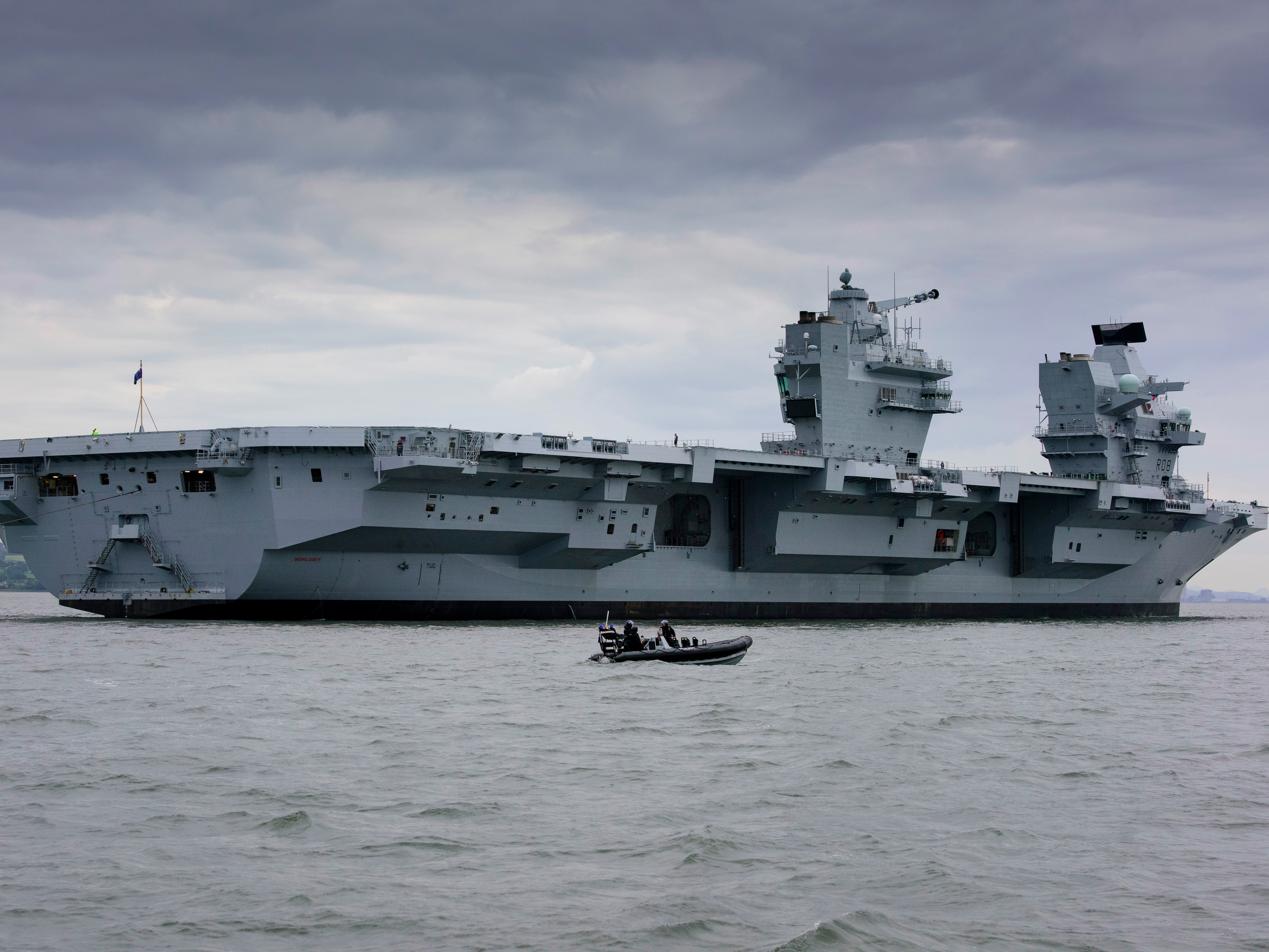- £3 billion aircraft carrier HMS Queen Elizabeth running on Windows XP. MoD confident ship can ward off cyber attacks. The carrier is six years late and will not have a fleet of planes until 2023.
Britain’s new £3 billion ($3.8 billion) aircraft carrier is running on Windows XP, according to journalists given a tour of the ship.
HMS Queen Elizabeth launched on Monday amid huge fanfare, with senior military figures declaring “a new era of British maritime power.” The 280-metre craft left the Rosyth Dockyard in Scotland to begin its first tests on the open seas.
But, despite the huge cost of the much-delayed vessel, reporters invited on board spotted that some of its computers are still running the archaic XP version of Microsoft’s operating system, which was first launched in 2001.
A new era of British maritime power begins… pic.twitter.com/nJz3RYl0sE
— Former First Sea Lord 2016-2019 (@AdmPhilipJones) June 26, 2017
According to The Times, journalists taken on a press tour of the Queen Elizabeth last week saw a computer monitor displaying Windows XP logos. It is not clear whether all of the ship's computers are using XP, or just some.
An unnamed defence source told The Times that XP was likely being used because the ship's IT would have been ordered in 2004, when it was still commonplace, but is now laughably out of date.
It is reportedly due to stay in use until 2026, when both the Queen Elizabeth and its sister vessel HMS Prince of Wales will have their systems updated.
MoD has "confidence" in aircraft carrier's security
The presence of the software on board has prompted worries that the vessel will be vulnerable to the same species of cyber attack which crippled the NHS last month.
Outdated computers running old software - which no longer receive security patches - were left vulnerable to the WannaCry virus which knocked out IT systems at dozens of hospitals, causing widespread disruption.
However, military officials said the ship is not vulnerable to cyber attack in the same way as the NHS because its systems are not connected to the civilian internet.
In a statement to Business Insider, a Ministry of Defence spokeswoman said: "While we don't comment on the specific systems used by our ships and submarines, we have absolute confidence in the security we have in place to keep the Royal Navy's largest and most powerful ship safe and secure."
Queen Elizabeth naming ceremony featured a plastic plane
Outdated computer software is the latest in a string of embarrassments to hit the Royal Navy's new aircraft carrier project, which is six years behind schedule.
Britain has had no aircraft carriers since HMS Ark Royal was decommissioned in 2011 and sold to a Turkish company for scrap.

Meanwhile, the UK is still waiting on its full complement of F-35 fighter jets which will fly from the Queen Elizabeth and sister vessel, the Prince of Wales.
So far the UK only has four F-35s, and is not due to receive all of them until 2023, two years after the Queen Elizabeth is expected to become operational.
In 2014, when the ship was officially named, Ministry of Defence officials used a fake, fibreglass model of an F-35 for the ceremony because they didn't have any real ones.

